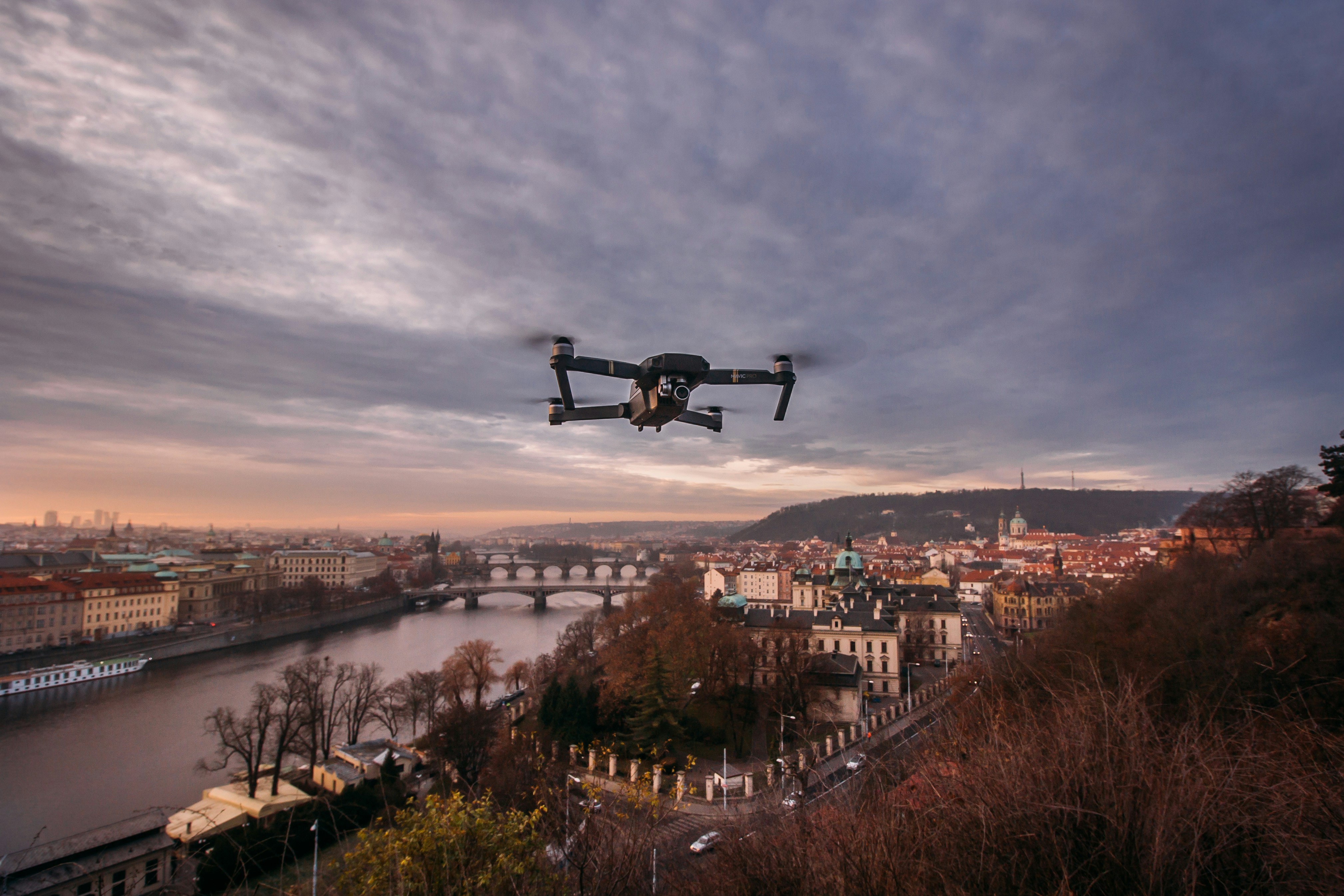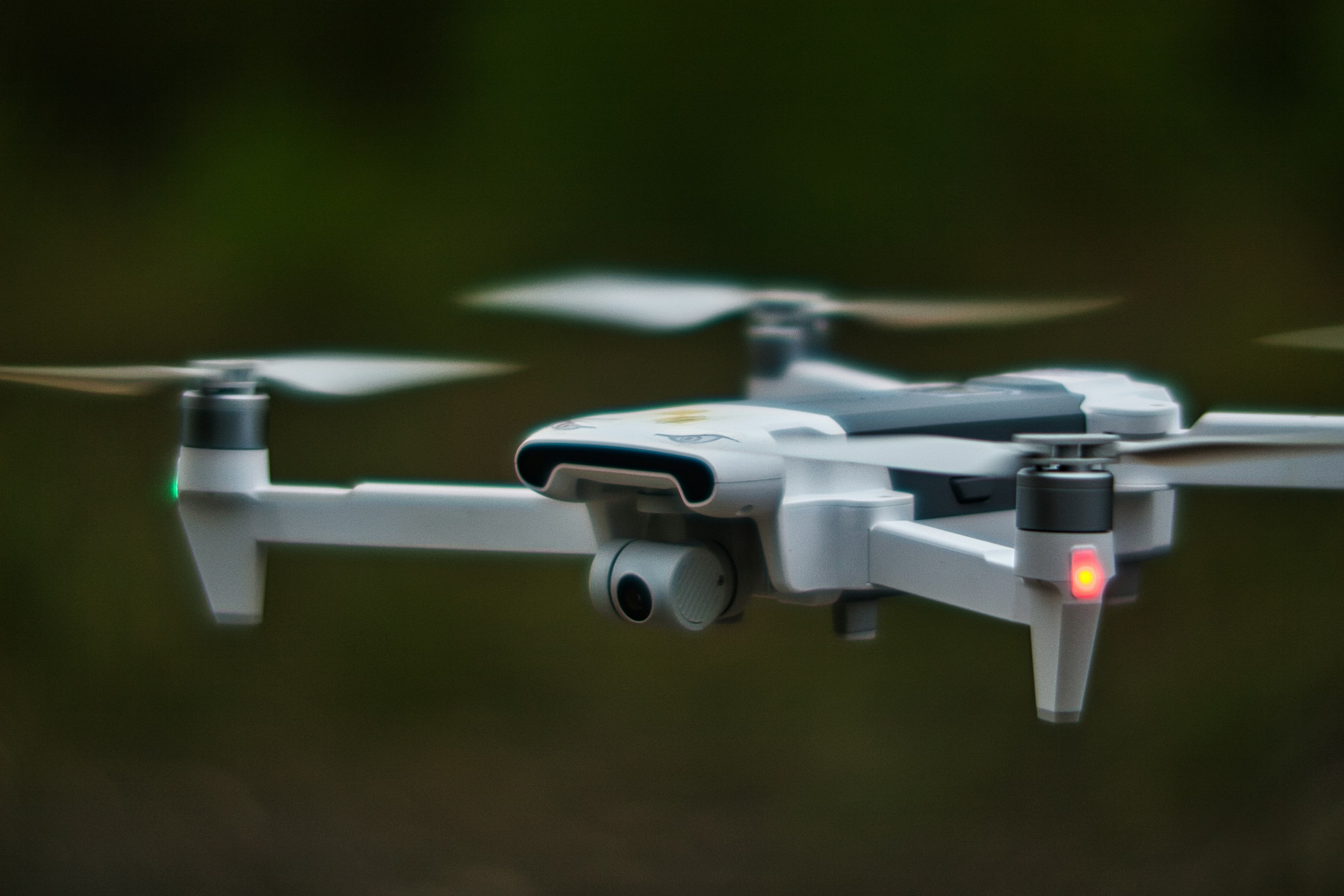
Portfolio Projects That Get You Hired for UAV Jobs (With Real GitHub Examples)
Unmanned Aerial Vehicles (UAVs), commonly known as drones, are reshaping industries—from aerial mapping and agriculture to disaster response and commercial delivery. As drone technology evolves rapidly, employers in the UAV sector are hungry for professionals with proven hands-on skills—be that in flight control, software integration, sensor fusion, or mechanical design. But how do you demonstrate these skills effectively?
A robust UAV portfolio can help you stand out in a competitive job market. In this guide, we’ll cover:
Why a UAV portfolio is crucial for demonstrating your capabilities.
Choosing or designing UAV projects aligned with different drone-related roles.
Real GitHub examples showcasing best practices in flight software, hardware integration, and autonomous control.
Actionable project ideas to boost your portfolio right away.
Best methods for presenting your work—ensuring recruiters see your impact immediately.
Finally, we’ll point you to how you can connect your portfolio to real job openings, starting with a reminder to upload your CV on UAVJobs.co.uk so that employers seeking drone talent can easily find you.
1. Why a UAV Portfolio Matters
UAVs present a multi-disciplinary challenge. Employers are looking for evidence that you can:
Integrate hardware and software: You need to show you’ve worked with flight controllers, sensors, motor controllers, or autopilots (like PX4 or ArduPilot).
Handle real-world constraints: UAVs often deal with limited power, payload, real-time control, and safety concerns in unpredictable environments.
Demonstrate autonomy or advanced features: Whether it’s computer vision, path planning, or swarm coordination, a strong portfolio proves you can go beyond remote piloting.
Follow industry standards: Drone communication protocols (MAVLink), safety procedures, regulatory constraints—practical knowledge matters.
A good UAV portfolio brings these elements to life: flight logs, code repositories, hardware pictures, and performance metrics that show your readiness to tackle drone-related tasks in real-world conditions.
2. Matching Portfolio Projects to UAV Roles
The UAV sector is vast, covering everything from autonomous delivery drones to military reconnaissance and indoor inspection robots. Tailor your portfolio to the sub-fields or roles you’re aiming for:
2.1 Drone Software Engineer
Typical Responsibilities: Implementing and testing autopilot firmware, path planning, sensor integration, mission control software.
Ideal Portfolio Focus:
Flight stack modifications (ArduPilot, PX4) or custom autopilot code.
Simulations in Gazebo or jMAVSim, with SITL (Software-In-The-Loop) approaches.
ROS integration if you’re handling advanced autonomy or perception.
2.2 Embedded / Electronics Engineer
Typical Responsibilities: Designing and wiring flight controllers, ESCs, sensors, dealing with power distribution and custom PCBs.
Ideal Portfolio Focus:
Hardware builds: Show how you designed or selected components, tackled voltage regulation or EMI issues.
Firmware: If you wrote drivers for IMUs, barometers, or GPS modules, highlight that.
Testing setups: Document bench tests, real flight logs, or signal integrity checks.
2.3 UAV AI / Computer Vision Specialist
Typical Responsibilities: Building object detection and tracking systems, real-time SLAM, or AI-based perception for drones.
Ideal Portfolio Focus:
Computer vision pipelines: YOLO or OpenCV-based detection for obstacle avoidance.
Deep learning: Drone-based image classification or semantic segmentation (PyTorch, TensorFlow).
Sensor fusion: Combining LiDAR, camera, and IMU data for robust positioning.
2.4 Mechanical / Aeronautical Engineer
Typical Responsibilities: Designing UAV frames, aerodynamic optimisations, stress analysis, testing prototypes.
Ideal Portfolio Focus:
CAD models: 3D-printed or carbon-fiber frames with weight/payload analysis.
CFD simulations: Wing or propeller design for improved lift or reduced drag.
Structural testing: Show how you validated designs against vibrations, impact, or wind tunnels if possible.
2.5 UAV Operations / Field Specialist
Typical Responsibilities: Planning missions, pilot training, maintenance procedures, compliance with regulations (e.g., BVLOS flights, local aviation rules).
Ideal Portfolio Focus:
Operational logs: Documentation of flight missions, risk assessments, site surveys.
Maintenance schedules: Methods to ensure reliability, battery management.
Regulatory knowledge: Summaries of airspace classification, safety guidelines, or operating procedures.
By aligning projects with the sub-field you want, you ensure your portfolio resonates directly with the skill sets employers need.
3. Anatomy of a Top-Tier UAV Project
Regardless of your specific role, each portfolio project should demonstrate your approach to real UAV challenges:
Goal & Context
Are you building a drone for aerial mapping? An indoor inspection quadcopter? Summarise the problem or application.
Hardware Layout
List components: flight controller, motors, ESCs, sensors (GPS, IMU, LiDAR).
Provide diagrams or photos of the assembled drone.
Software / Firmware
If you modified flight stack code, show which autopilot platform (PX4, ArduPilot).
Mention communication protocols (MAVLink) or data logging approaches.
Algorithmic or Engineering Approach
For autonomy: path planning, sensor fusion, or AI modules.
For mechanical design: weight distribution, aerodynamic considerations.
For electronics: bus speeds, power constraints, noise filtering.
Testing & Validation
Flight logs: altitude, velocity, battery usage, or error metrics (GPS drift, control loop stability).
Bench test results for thrust, motor performance, or sensor calibration.
Simulation steps if you tested SITL or used a simulator like Gazebo or AirSim.
Results & Metrics
Flight time, max payload, control precision, or localisation accuracy.
Benchmarks vs. baseline or improvements after iterations.
Challenges & Solutions
Did you handle high vibration, GPS dropout, or motor calibration issues?
Summarise how you overcame them (sensor damping, software filters, mission failsafes).
Documentation & Media
Provide readmes, diagrams, short flight videos or images, data plots.
If relevant, link to flight planning software or GCS screenshots (e.g., QGroundControl, Mission Planner).
By covering these bases, you prove that your UAV solutions are holistically designed and tested—a must in a field where reliability is paramount.
4. Real GitHub Examples to Study
The UAV community, especially open-source autopilots, offers insight into professional coding, hardware integration, and flight testing:
4.1 PX4 Autopilot
Repository: PX4/PX4-AutopilotWhy it’s great:
Widely used: PX4 is a popular open-source autopilot for drones and other vehicles.
Rich codebase: See how flight stack architecture, sensor drivers, and parameter systems are structured.
Thriving ecosystem: Active developers, thorough documentation, integration with QGroundControl.
4.2 ArduPilot
Repository: ArduPilot/ardupilotWhy it’s great:
Long history: A robust platform supporting multicopters, fixed-wing, rovers, and more.
Focus on reliability: Observe how they handle failsafes, sensor fusion, advanced flight modes.
Extensive community: Frequent commits, PRs, broad hardware support.
4.3 AirSim
Repository: microsoft/AirSimWhy it’s great:
Simulation: A platform for AI research on drones (and cars) with realistic physics in Unreal/Unity.
Integration: Good example of connecting flight code, sensor data, and ML algorithms in a 3D environment.
Tutorials: Show how to create custom drone controllers, camera pipelines, or RL-based solutions.
Studying these projects reveals how industry-leading teams handle version control, community collaboration, testing, and robust UAV frameworks.
5. Six Portfolio Project Ideas to Get You Hired
Need inspiration? Here are practical UAV project ideas showcasing crucial skills:
5.1 Autonomous Waypoint Navigation
Key focus: Basic autopilot usage, mission planning, real flight verification.
Implementation steps:
Use a common flight controller (like a Pixhawk) with ArduPilot or PX4.
Define waypoints via ground control software (Mission Planner, QGroundControl).
Document flight logs for verifying autonomy—watch for altitude hold, GPS accuracy.
Summarise final precision, potential improvements (e.g., better magnetometer calibration).
5.2 Obstacle Avoidance with Computer Vision
Key focus: AI/CV integration, sensor fusion, real-time constraints.
Implementation steps:
Mount a monocular or stereo camera.
Implement an object detection or depth estimation approach (OpenCV, YOLO, or Intel RealSense).
Send avoidance commands to autopilot when obstacles are detected within a threshold.
Evaluate reliability, false positives, or processing latency.
5.3 Custom Quadcopter Build from Scratch
Key focus: Hardware design, electronics integration, mechanical assembly.
Implementation steps:
Choose frame, motors, ESCs, flight controller, battery.
Document assembly, wiring diagrams, and calculations (propeller thrust, flight time).
Test basic stability in a safe environment.
Summarise flight time vs. predicted calculations, highlight challenges.
5.4 Swarm Coordination Simulation
Key focus: Multi-UAV autonomy, communication protocols, distributed algorithms.
Implementation steps:
Use a simulator (Gazebo, AirSim) with multiple drone models.
Implement a swarm approach: e.g., leader-follower, coverage path planning, or formation control.
Evaluate performance: collision rates, mission completion time, network overhead.
Show how real hardware might replicate or approach your simulation design.
5.5 Precision Agriculture Drone (Multispectral / Thermal)
Key focus: Sensor integration, data processing, domain-specific application.
Implementation steps:
Mount a multispectral or thermal camera.
Plan flight paths over farmland, capture images.
Process data (NDVI, temperature anomalies) using Python scripts.
Summarise improvements (e.g., identifying water stress or pest areas).
5.6 Drone Delivery / Winch Mechanism
Key focus: Payload handling, mechanical design, safety considerations.
Implementation steps:
Attach a small servo-driven or motor-driven winch to your UAV.
Code routines for lowering/raising the payload.
Address stability concerns when payload is in motion.
Provide test logs of actual or simulated flight performance under load.
These projects can be adapted to your budget, resources, and expertise—the key is thorough documentation, testing, and clarity in how each step ties into real-world UAV demands.
6. Best Practices for Showcasing Your UAV Work
6.1 Readable Repositories
Project name: e.g.,
px4-vision-obstacle-avoidance,autonomous-drone-swarm.Folder structure: Keep separate directories for hardware docs, firmware code, flight logs, scripts, etc.
README: Summarise approach, hardware, dependencies, flight tests, results.
6.2 Visual Demos
Short videos: A 1-2 minute flight demonstration or SITL run can be very convincing.
Photos: Drone assembly, sensor mounting, or GCS screenshots.
Plots / Graphs: Flight altitude vs. time, battery voltage usage, or path tracking error.
6.3 Data & Logs
Flight logs: If using PX4 or ArduPilot, attach .bin or .log files (or snippets) with relevant analysis.
Debug output: Show a snippet of the console messages or MavLink telemetry for interesting events.
Sensors: Distances, GPS lat/long, barometer alt, to illustrate how well they performed or fused.
6.4 Documentation & Safety
Checklists: Preflight or postflight check procedures.
Failsafes: Summarise how you handle GPS loss, battery failsafe, or RC failsafe.
Lessons learned: If you crashed or encountered major issues, explain how you diagnosed and fixed them.
Professional, structured, and thorough presentation signals you’re serious about drone reliability and safety—a big plus in UAV hiring.
7. Beyond GitHub: Spreading the Word
While GitHub is critical for code, you can enhance your reach:
Personal Website / Blog
Write up your projects with narrative detail: design choices, challenges, crash stories (and solutions!).
Embed short demo videos or flight logs.
LinkedIn Articles
Summarise your project’s highlights (e.g., “Obstacle avoidance drone with YOLO in real-time”).
Link to GitHub or your site for deeper technical details.
YouTube / Vimeo
Create short 2–5 minute videos showcasing your UAV’s build or flight.
Provide voice-over explaining hardware, software, and flight performance.
Local Drone Meetups / Conferences
Present your project or host a small workshop if possible.
Networking in-person can open job leads and collaborative opportunities.
A multi-pronged presence ensures potential employers, peers, and collaborators see you actively engaged in the UAV community.
8. Linking Your Portfolio to Job Applications
Ensure your UAV achievements aren’t overlooked:
CV and Cover Letter
List 2–3 bullet points with direct links to relevant UAV repos or videos.
Summarise “Built a custom quadcopter with Lidar-based SLAM—[GitHub Link].”
Online Profiles
UAVJobs.co.uk, LinkedIn, Indeed—these boards often let you embed external links or attach files.
Provide a short description: “Autonomous orchard-mapping drone—demonstrates sensor fusion and path planning.”
A well-presented UAV portfolio can drastically shift an interview from a skill-based interrogation to an excited conversation about potential roles you can fill.
9. Building Credibility and Visibility
If you want to rank higher or gain more exposure:
Open-Source Contributions
Contribute to ArduPilot, PX4, or any open UAV libraries.
Fix bugs, add features, or improve documentation—each merged PR is a testament to your expertise.
Q&A / Forums
On forums like PX4 Discuss, ArduPilot Discourse, or Drone-related Stack Exchange, link your project if it addresses a user’s query.
Offer solutions or insights to build community trust.
Competitions / Challenges
Consider drone races, hackathons, or challenges like UAV competitions (AUVSI SUAS, DRL).
Publish your approach or results, linking to your portfolio.
Each step further cements your personal brand among UAV enthusiasts and recruiters alike.
10. Frequently Asked Questions (FAQs)
Q1: How many UAV projects should I include in my portfolio?Two to four thoroughly documented projects usually suffice. Each should highlight different aspects—e.g., hardware integration, advanced autonomy, or mechanical design.
Q2: Must I show flight tests on real hardware?If possible, yes—it’s compelling proof. But simulation-based projects can still be valid, especially if you detail SITL or advanced autonomy concepts. Emphasise your approach to bridging sim-to-real if you haven’t tested physical drones.
Q3: How do I handle proprietary data/code from past roles?Respect NDAs. Instead, replicate the methodology with open hardware or simplified prototypes if you can’t share original code or logs.
Q4: Do I need advanced math or aerodynamic knowledge for a good UAV portfolio?It depends on the role. A mechanical/aerodynamics job might demand CFD or wing design. A software position might focus more on flight stacks or AI. Showcase relevant math as needed, but ensure the project’s practicality remains clear.
Q5: Can I rely solely on an existing autopilot, or should I code from scratch?Using established autopilots (ArduPilot, PX4) is common and practical. The focus is on custom integration or feature expansions—like adding sensors, custom flight modes, or advanced autonomy layers.
11. Final Checks Before Sharing Your Portfolio
Before you send your portfolio to potential employers, confirm:
Clarity: Does each project’s README or summary clearly explain goals, approach, results?
Visuals: Are images, flight videos, or simulation captures included for maximum impact?
Code Quality: Are repos well-structured, with descriptive commit messages, and minimal dead code?
Flight Logs / Data: If relevant, do you link or embed logs, with at least some analysis?
Permissions: Ensure no confidential or private data (like flight controller keys or private code) is exposed.
A final polishing round helps your UAV portfolio stand out as both professional and engaging.
12. Conclusion
The UAV world is advancing at breakneck speed, with opportunities spanning agriculture, logistics, surveillance, and more. A well-crafted drone portfolio that showcases real projects—from autopilot modifications to custom hardware builds—can significantly boost your credibility. By demonstrating practical skills, thorough testing, and robust documentation, you position yourself as someone ready to tackle high-stakes aerial challenges.
Key Takeaways:
Align projects with your UAV niche: software, electronics, computer vision, mechanical, or operations.
Provide detailed documentation: flight logs, code repositories, sensor data, successes, and challenges.
Share your work broadly—on GitHub, personal sites, LinkedIn, or drone meetups for maximum visibility.
Finally, upload your CV on UAVJobs.co.uk so employers in the drone space can easily discover your portfolio.
The world of UAVs needs engineers and specialists who can fuse technical depth with hands-on integration—from drafting sensor-laden quadcopters to coding advanced flight autonomy. By investing in real projects, carefully documenting them, and presenting them effectively, you’ll soar above the competition—proving you’re the drone expert employers want on their team. Good luck, and may your flights be smooth and your landings precise!


